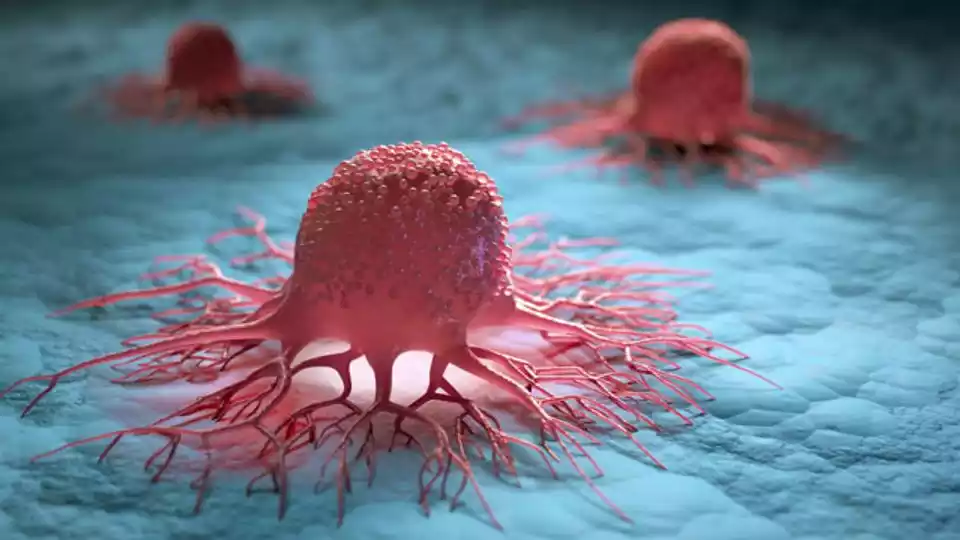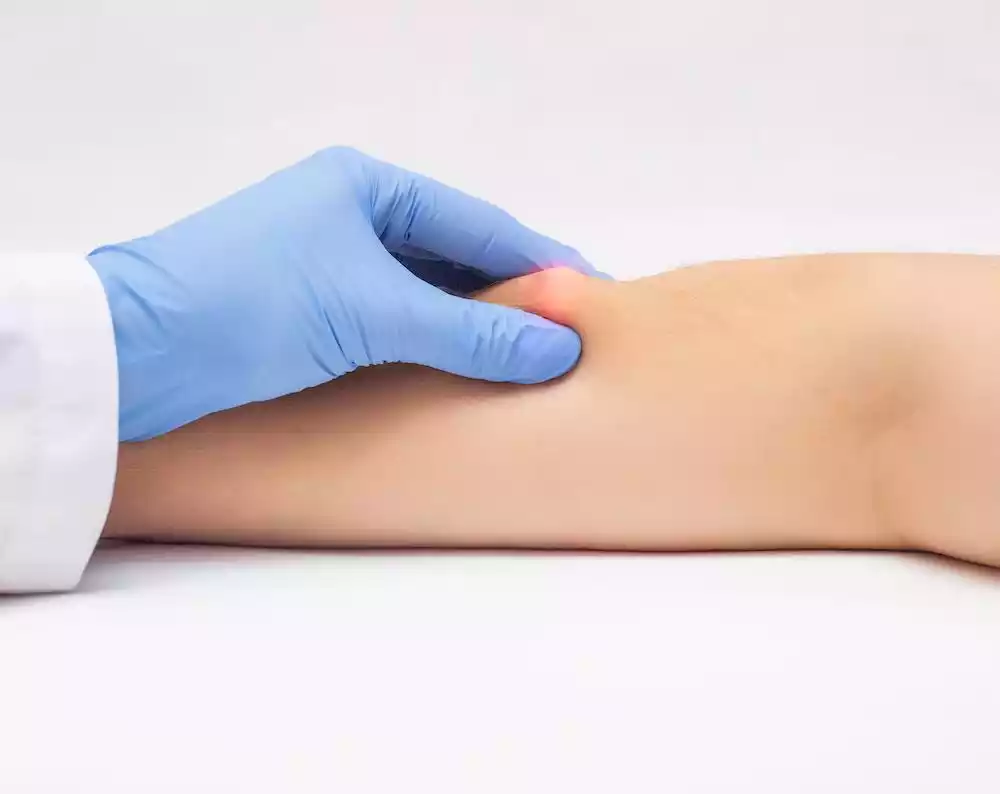Fatty lumps, medically known as lipomas, are benign growths of fat cells that form under the skin, often appearing soft and movable upon touch. They are usually harmless and non-cancerous, posing little to no risk to health. Cancer is one of the conditions that manifest as the uncontrolled expansion and spread in abnormal cell types.
Cancer can develop in almost any organ or tissue, such as the lung, breast, colon, or skin, and can potentially be life-threatening. It requires prompt medical attention and often involves treatments like surgery, radiation, or chemotherapy. The key difference between a fatty lump and cancer is that a fatty lump is generally benign and stable, while cancer is malignant and can grow and spread aggressively.
Explanation of Fatty Lump
A fatty lump, also known as a lipoma, is a benign (non-cancerous) growth of fat cells that usually forms beneath the skin. These lumps are typically soft and movable under the skin and are often round or oval in shape. Lipomas can occur anywhere on the body where fat cells are present, but they are most commonly found on the torso, neck, upper thighs, upper arms, and armpits.

They usually grow slowly and are not harmful. Lipomas are one of the most common types of soft tissue tumors and are generally painless, although they can become uncomfortable if they grow large or press on nearby nerves. Treatment is not necessary unless the lipoma is bothersome, in which case it can be removed through surgery.
Types of Fatty Lump
Fatty lumps, medically known as lipomas, come in different types based on their characteristics and the tissues they involve. Here are some common types:
- Conventional Lipoma: This is the most common type, composed of mature white fat cells. They are typically soft, movable, and located just under the skin.
- Fibrolipoma: These lipomas contain a significant amount of fibrous tissue, making them feel firmer than conventional lipomas.
- Angiolipoma: This type contains both fat and blood vessels. Angiolipomas are often tender or painful, which is not typical for other lipomas.
- Myelolipoma: These lipomas consist of fat and hematopoietic (blood-forming) tissue. They are found most often within the adrenal glands.
- Spindle Cell Lipoma: Predominantly found in men, these lipomas are characterized by spindle-shaped cells. They are usually located on the neck and back.
- Pleomorphic Lipoma: Similar to spindle cell lipomas in terms of location and demographic, pleomorphic lipomas contain cells of various shapes and sizes.
- Hibernoma: This rare type of lipoma is made up of brown fat, which is the body’s heat-generating fat. Hibernomas are more metabolically active than other types of lipomas.
- Intramuscular Lipoma: These lipomas grow within the muscles and can be more challenging to remove due to their location.
Each type of lipoma can vary in size, location, and symptoms. While most lipomas are benign and do not require treatment, a doctor should evaluate any new growth or change in an existing lump to rule out more serious conditions.
Causes of Fatty Lump
The exact causes of fatty lumps, or lipomas, are not completely understood, but several factors are believed to contribute to their development:
- Genetic Factors: There’s a hereditary aspect to lipomas. Anyone with an ancestral background of lipomas have a higher prone to develop the tumors. Some genetic conditions, such as familial multiple lipomatosis, involve the development of multiple lipomas.
- Age: Lipomas are more common in middle age, particularly between the ages of 40 and 60. They can happen at any time.
- Obesity: While lipomas are made up of fat cells, they are not necessarily linked to obesity. However, being overweight might increase the visibility and number of lipomas.
- Physical Trauma: Some studies suggest that an injury, such as a blunt blow to a part of the body, may trigger the growth of a lipoma at that site.
- Lifestyle Factors: There is no conclusive evidence linking diet or lifestyle directly to the development of lipomas. However, a balanced diet and regular exercise contribute to overall good health, which might influence the occurrence or the noticeability of lipomas.
- Other Health Conditions: Certain conditions, like liver disease or diabetes, might be loosely associated with an increased risk of developing lipomas, though the connection is not well-established.
While these factors may contribute to the risk of developing lipomas, their presence does not guarantee that lipomas will form. Additionally, since lipomas are benign tumors, their growth is not typically linked to cancerous processes. If you notice a new growth or changes in an existing lump, it’s always a good idea to consult a healthcare professional for an accurate diagnosis and advice.
Explanation of Fatty Cancer
The term “fatty cancer” is not a standard medical term, but it might refer to a type of cancer that arises in fat cells, known as a liposarcoma. Liposarcoma is a very rare connective tissue cancer which resemble fat cells when examined under an microscope. It is a type of soft tissue sarcoma and can occur in any part of the body, but most often it affects the thigh, behind the knee, or in the abdomen.

Unlike benign lipomas (fatty lumps), liposarcomas are malignant, meaning they can invade nearby tissues and spread to other parts of the body. These tumors vary in their aggressiveness and potential for metastasis (spread). Treatment typically involves surgery to remove the tumor, possibly followed by radiation therapy or chemotherapy, depending on the stage and aggressiveness of the cancer.
Types of Fatty Cancer
“Fatty cancer” is not a standard medical term, but it generally refers to cancers that originate in fat cells. The primary type of cancer that arises in fat cells is known as liposarcoma. Liposarcomas are a group of rare malignant tumors and are a subtype of soft tissue sarcomas.
They can be classified into several types, each with distinct characteristics:
- Well-Differentiated Liposarcoma (Atypical Lipomatous Tumor): This type is the most common and least aggressive. It usually occurs in the limbs or abdomen and tends to grow slowly. It has a low risk of metastasizing (spreading to other parts of the body).
- Myxoid Liposarcoma: This type is characterized by a gelatin-like appearance due to its mucous-like matrix. It is more likely to occur in younger adults and often appears in the limbs, particularly the thighs. Myxoid liposarcoma has a moderate risk of metastasis.
- Round Cell Liposarcoma: This type is a more aggressive and high-grade form of myxoid liposarcoma, characterized by small, round cells. It has a higher risk of metastasizing and is associated with a poorer prognosis.
- Pleomorphic Liposarcoma: This is a rare and aggressive form, characterized by a variety of cell shapes and sizes. It often occurs in the limbs and has a high risk of metastasis.
- Dedifferentiated Liposarcoma: This type occurs when a well-differentiated liposarcoma transforms into a higher-grade, more aggressive tumor. It usually occurs in the abdomen or limbs and has a higher risk of spreading.
Each type of liposarcoma has distinct features, including variations in aggressiveness, typical locations in the body, and risk of metastasis. Treatment options for liposarcoma may include surgery, radiation therapy, and chemotherapy, depending on the type, location, size, and stage of the tumor. Treatment and detection early is essential to improve outcomes.
Causes of Fatty Cancer
Fatty cancer, specifically referring to liposarcoma, a cancer originating in fat cells, has several potential causes and risk factors. Like many cancers, the exact cause of liposarcoma is not fully understood.
Here are some factors that may contribute to its development:
- Genetic Mutations: Liposarcomas, like other cancers, are caused by mutations in the DNA of cells. These mutations can be random or may be influenced by environmental factors. Certain genetic syndromes may also increase the risk of developing soft tissue sarcomas, including liposarcoma.
- Radiation Exposure: Previous exposure to radiation, such as radiation therapy for other cancers, can increase the risk of developing soft tissue sarcomas, including liposarcoma, particularly if the treatment occurred at a young age.
- Chemical Exposure: Exposure to certain chemicals, such as vinyl chloride and dioxin, has been linked to an increased risk of developing soft tissue sarcomas.
- Age: Liposarcomas are more commonly diagnosed in adults, particularly those in their 50s and 60s. They can happen at any time.
- Lifestyle Factors: While lifestyle factors like diet and exercise are not directly linked to the development of liposarcoma, maintaining a healthy lifestyle can help reduce the risk of cancer in general.
- Chronic Lymphedema: This condition, characterized by swelling due to fluid accumulation, especially after lymph node dissection for cancer treatment, may slightly increase the risk of developing certain types of soft tissue sarcoma, including liposarcoma.
- Familial Cancer Syndromes: Certain inherited syndromes, like Li-Fraumeni syndrome, can increase the risk of soft tissue sarcomas.
These risk factors does not mean that a person will definitely develop liposarcoma. Most people with these risk factors do not develop this type of cancer, and many with liposarcoma may not have any apparent risk factors. As with any health concerns, regular medical check-ups and discussing any risk factors with a healthcare provider can help in early detection and management.
Comparison table of Fatty Lump and Cancer
Here is a comparison table outlining key differences between a Fatty Lump (Lipoma) and Cancer:
| Characteristic | Fatty Lump (Lipoma) | Cancer |
|---|---|---|
| Definition | A benign growth of fat cells under the skin. | A variety of illnesses that involve abnormal cell growth that has the possibility of spreading to other areas in the body. |
| Nature | Benign (non-cancerous), usually slow-growing. | Malignant, can be aggressive and fast-growing. |
| Common Locations | Torso, neck, upper thighs, upper arms, armpits. | Can occur in any organ or tissue. |
| Symptoms | Soft, movable lumps under the skin, usually painless. | Varies widely depending on the type and location; can include lumps, pain, weight loss, fatigue, etc. |
| Potential for Metastasis | Does not metastasize. | It can metastasize to other areas within the human body. |
| Treatment | Generally none required; surgical removal if bothersome. | Surgery, radiation, chemotherapy, targeted therapy, depending on type and stage. |
This table highlights the primary differences in aspects such as their nature, symptoms, potential for spreading (metastasis), and treatment approaches.
Diagnosis and Testing
Diagnosing and testing for fatty lumps (lipomas) and cancer involves several steps and methods, tailored to the specific characteristics of each condition:

Fatty Lump (Lipoma)
- Physical Examination: A doctor will typically start with a physical examination, feeling the lump for its texture, size, and mobility.
- Medical History: A review of the patient’s medical history and any family history of similar conditions.
- Imaging Tests:
-
- Ultrasound: Useful for distinguishing lipomas from other types of tumors.
- MRI or CT Scans: Sometimes used for a more detailed view, especially if the lipoma is deep-seated or large.
- Biopsy: Rarely required, but a doctor might perform a biopsy (removing a small tissue sample for analysis) if there is any uncertainty about the diagnosis or concern about malignancy.
Cancer
- Physical Examination: Checking for unusual lumps, changes in skin color or texture, or other abnormal signs.
- Medical History: Reviewing the patient’s personal and family medical histories, including any history of cancer.
- Laboratory Tests: Blood tests and other lab tests can help identify markers that might indicate cancer.
- Imaging Tests:
-
- X-rays, Ultrasound, CT, MRI, and PET Scans: These can reveal internal tumors and provide information on their size, location, and whether they have spread.
- Biopsy: This is the definitive way to diagnose cancer. A sample of tissue from the suspected area is removed and examined microscopically for cancer cells.
- Endoscopy: For certain cancers, an endoscope (a thin, flexible tube with a camera) is used to explore areas like the gastrointestinal tract.
- Genetic Testing: In cases with a suspected genetic component, genetic testing might be done to identify inherited cancer risks.
Follow-Up and Monitoring
- Fatty Lump: Regular monitoring may be advised to check for any changes in size or feel.
- Cancer: Follow-up tests and regular monitoring are crucial to assess the effectiveness of treatment and check for recurrence.
Treatment Options for Fatty Lump and Cancer
Treatment options for fatty lumps (lipomas) and cancer are distinct due to the fundamental differences in their nature and potential health impacts.
Fatty Lump (Lipoma)
- Observation: Often, no treatment is necessary for lipomas. They are benign and usually don’t cause pain or complications. Regular monitoring might be recommended.
- Surgical Removal: If a lipoma is painful, infected, growing, or causing cosmetic concerns, it can be surgically removed. This is a relatively straightforward procedure often done under local anesthesia.
- Liposuction: In some cases, particularly for larger lipomas, liposuction can be used to remove the fat.
- Steroid Injections: These can be used to shrink the lipoma but might not completely eliminate it.
Cancer
Cancer treatments vary widely depending on the type, stage, location, and the patient’s overall health. Common treatments include:
- Surgery: To remove the tumor and some surrounding healthy tissue. In some cases, surgery can effectively remove all of the cancer.
- Chemotherapy: Drugs designed to eliminate or slow the spread of cancerous cells. It can be systemic (affecting the whole body) or localized.
- Radiation Therapy: Utilizing high-energy rays (like X-rays ) to destroy cancerous cells. It is possible to use it on its own or in conjunction in conjunction with different treatments.
- Immunotherapy: Utilizes the body’s immune system to combat cancer.
- Hormone Therapy: Used for cancers that are sensitive to hormones, like some breast and prostate cancers.
- Targeted Therapy: Involves drugs that target specific genes or proteins that contribute to cancer growth and survival.
- Bone Marrow/Stem Cell Transplant: Used primarily for blood-related cancers.
- Palliative Care: Aims to improve quality of life by managing symptoms and side effects of cancer and treatment.
Personalized Treatment
- Cancer: Treatment plans are highly personalized based on various factors, including genetic makeup of the tumor, patient preferences, and potential side effects.
- Lipoma: Treatment is more straightforward but may be adjusted based on the lipoma’s size, location, and any symptoms it causes.
Prevention and Management
Prevention and management strategies for fatty lumps (lipomas) and cancer involve different approaches due to their distinct natures and underlying causes.
Fatty Lump (Lipoma)
- Prevention: There are no specific methods to prevent lipomas as their exact cause is not well understood. Since they are benign and often genetically influenced, lifestyle changes may not have a significant impact on their development.
- Healthy Lifestyle: Maintaining a healthy weight and balanced diet is generally recommended for overall health, though it may not directly affect lipoma formation.
- Regular Self-Exams: Keeping an eye on any new growths or changes in existing lumps can help in early detection and treatment if needed.
- Medical Check-Ups: Regular check-ups can help monitor any changes in lipomas and provide peace of mind.
Cancer
- Lifestyle Changes:
-
- Avoid Tobacco: Smoking and tobacco use are major cancer risk factors.
- Healthy Diet: A diet rich in fruits, vegetables, whole grains, and lean proteins can reduce cancer risk.
- Regular Exercise: Physical activity can lower the risk of several types of cancer.
- Limit Alcohol Consumption: Reducing alcohol intake can decrease the risk of certain cancers.
- Sun Protection: Protecting skin from excessive sun exposure can prevent skin cancers.
- Regular Screening and Self-Exams: Early detection increases the chance of successful treatment for many cancers. This includes breast, cervical, colorectal, and skin cancers.
- Vaccinations: Vaccines (like HPV and Hepatitis B vaccines) can prevent cancers linked to certain viruses.
- Avoiding Risk Factors: Reducing exposure to environmental and occupational carcinogens (like asbestos, radon, and certain chemicals) is important.
- Healthcare Consultations: Discussing personal and family medical histories with a healthcare provider can help assess cancer risk and determine appropriate preventive measures.
Management
- For Lipoma: Management usually involves monitoring. If treatment is needed, it’s typically straightforward.
- For Cancer: Management is more complex and involves regular follow-ups, managing side effects of treatments, and psychological support. Rehabilitation and survivorship support are also important aspects of cancer care.
Psychological Impact
The psychological impact of dealing with a fatty lump (lipoma) and cancer can be quite different due to the varying nature and seriousness of these conditions.
Fatty Lump (Lipoma)
- Anxiety and Concern: Discovering any lump can cause initial worry or anxiety until it is diagnosed as benign.
- Body Image Issues: If a lipoma is visible or large, it might affect a person’s body image or self-esteem, especially if located in areas like the face, neck, or arms.
- Relief Post-Diagnosis: Once diagnosed as a lipoma, which is benign, individuals often feel relief.
- Minimal Long-term Psychological Impact: Since lipomas are typically harmless and don’t affect life expectancy, they usually have minimal long-term psychological effects.
Cancer
- Shock and Fear: Receiving a cancer diagnosis is often traumatic, evoking fear and uncertainty about the future.
- Anxiety and Depression: Concerns about treatment, outcomes, family impact, financial burden, and the potential for pain and suffering can lead to significant anxiety and depression.
- Impact on Self-Image and Lifestyle: Treatments like surgery, chemotherapy, and radiation can cause physical changes (e.g., hair loss, weight change) and impact lifestyle, affecting self-esteem and daily routines.
- Chronic Stress: The ongoing nature of cancer treatment and the fear of recurrence can lead to chronic stress and mental health challenges.
- Support Needs: Cancer patients often require psychological support, including counseling, support groups, and sometimes psychiatric care to cope with their diagnosis and treatment.
- Post-Treatment Emotional Challenges: Even after successful treatment, fears of recurrence and long-term side effects can persist, affecting mental health.
Support and Coping Mechanisms
- For Lipoma: Usually, reassurance and education about the benign nature of lipomas are sufficient. However, if cosmetic concerns are significant, psychological counseling can help.
- For Cancer: A comprehensive approach including psychological support, counseling, support groups, and possibly medication for anxiety or depression is often necessary. Survivor support networks and rehabilitation programs can also be beneficial.
The Role of Diet and Exercise
The role of diet and exercise varies when considering their impact on fatty lumps (lipomas) and cancer. While both are essential components of overall health, their specific effects on these conditions differ.

Fatty Lump (Lipoma)
- Limited Impact on Formation: The development of lipomas is not strongly linked to diet and exercise. Since lipomas are benign tumors of fat cells, they are not typically influenced by weight or diet.
- General Health Benefits: Maintaining a healthy diet and regular exercise is beneficial for overall health. However, it’s unlikely to prevent lipomas or reduce their size.
- Weight Management: For those with lipomas, being overweight might make lipomas more noticeable, so a balanced diet and regular exercise can help in managing overall body fat.
Cancer
- Preventive Role: Diet and exercise play a significant role in the prevention of certain types of cancer. A diet rich in fruits, vegetables, whole grains, and lean proteins, and low in processed and red meats, can reduce the risk of cancers such as colorectal, breast, and prostate cancer.
- Weight Management: Being overweight or obese increases the risk of several types of cancer. Regular exercise and a healthy diet can help maintain a healthy weight, thereby potentially reducing cancer risk.
- Exercise during Cancer Treatment: Regular physical activity can help manage some side effects of cancer treatment, improve energy levels, and enhance quality of life. It’s important for cancer patients to consult their healthcare team before starting any exercise regimen.
- Post-Treatment Recovery: For cancer survivors, a healthy diet and regular exercise can help regain strength, improve mood, and reduce the risk of cancer recurrence and other health issues.
- Immune System Support: A nutritious diet and regular exercise can support the immune system, which is important in both cancer prevention and recovery.
Medical Advances in Treatment and Management
Medical advances in the treatment and management of fatty lumps (lipomas) and cancer have evolved significantly, although the nature of these advances differs due to the contrasting seriousness and complexity of these conditions.
Fatty Lump (Lipoma)
- Minimally Invasive Removal Techniques: Developments in surgical techniques have made the removal of lipomas less invasive. Techniques like liposuction and laser removal can be used for larger or more difficult-to-reach lipomas.
- Improved Diagnostic Tools: Advances in imaging technology, such as high-resolution ultrasound and MRI, have improved the ability to distinguish lipomas from more serious conditions like liposarcomas.
- Genetic Research: There is ongoing research into the genetic factors that might contribute to the development of lipomas, which could lead to better prevention strategies or targeted therapies in the future.
Cancer
- Targeted Therapy: This treatment uses drugs designed to target specific genes or proteins that are involved in the growth and survival of cancer cells, leading to more effective and less harmful treatments compared to traditional chemotherapy.
- Immunotherapy: This rapidly advancing field involves treatments that boost or restore the ability of the immune system to fight cancer. Drugs like checkpoint inhibitors have shown remarkable results in some cancers.
- Personalized Medicine: Advances in genetic and molecular profiling of tumors are enabling more personalized treatment plans, improving the effectiveness of treatments and reducing side effects.
- CAR-T Cell Therapy: A groundbreaking type of immunotherapy for certain blood cancers, where a patient’s T cells are genetically engineered to better recognize and attack cancer cells.
- Improved Screening and Early Detection: Advances in screening technologies for various cancers (like breast, cervical, and colorectal cancer) have led to earlier detection and better survival rates.
- Nanotechnology: The use of nanoparticles in drug delivery allows for more targeted therapy, potentially reducing the side effects of cancer treatments.
When to See a Doctor
Knowing when to see a doctor is crucial for both fatty lumps (lipomas) and any suspected cancerous growths.

Here are guidelines for each:
Fatty Lump (Lipoma)
- New Growth: If you notice a new lump anywhere on your body.
- Changes in Size or Shape: If an existing lump grows, changes shape, or changes in any other way.
- Pain or Discomfort: Although lipomas are usually painless, if you experience pain or discomfort, it’s important to get it checked.
- Location Issues: If the lump is in a location that causes inconvenience, discomfort, or affects mobility.
- Multiple Lumps: If you develop multiple lumps, it’s advisable to get them evaluated.
- Concerns About Appearance: If the lipoma is causing cosmetic concerns, especially if it’s in a visible area.
Suspected Cancer
- Unexplained Lump: If you find a new lump, especially if it’s hard and immovable.
- Changes in Existing Moles or Skin Lesions: Look for changes in size, color, shape, or symptoms like itching or bleeding.
- Persistent Symptoms: Unexplained weight loss, persistent fatigue, ongoing pain, changes in bowel or bladder habits, or persistent coughing or hoarseness.
- Unusual Bleeding or Discharge: Any unusual bleeding, such as in stool, urine, or from the nipple.
- Change in Breast Appearance: Changes in the size, shape, or feel of the breast or nipple.
- Non-Healing Sores: Sores that do not heal over time, which could indicate skin cancer or cancers in other areas like the mouth.
Similarities between Fatty Lump and Cancer
While fatty lumps (lipomas) and cancers, particularly cancers of fat cells like liposarcomas, are fundamentally different in nature, they do share some similarities:
- Physical Appearance: Both can present as lumps or masses in the body. To the untrained eye, a fatty lump and a tumor may initially appear similar.
- Cellular Growth: Both involve the growth of cells. Lipomas result from the growth of fat cells, while cancers involve uncontrolled growth of abnormal cells.
- Need for Medical Evaluation: Both conditions warrant evaluation by a healthcare professional. It’s important to have any new or changing lumps assessed to rule out cancer or other serious conditions.
- Potential Need for Surgical Removal: In some cases, both lipomas and cancerous tumors may require surgical removal. For lipomas, this is typically for comfort or cosmetic reasons, while for cancer, it is a crucial part of treatment.
- Can Occur Anywhere in the Body: Both lipomas and many types of cancer can develop in various parts of the body. Lipomas commonly occur in areas like the neck, torso, and limbs, and many cancers can also appear in these locations.
- Asymptomatic Nature: Especially in their early stages, both lipomas and some forms of cancer may not cause any symptoms. They might be discovered incidentally during physical examinations or imaging studies done for other reasons.
Despite these similarities, it’s crucial to differentiate between a benign lipoma and a malignant cancer, as their treatment and implications for health are significantly different. A healthcare provider can provide a proper diagnosis and recommend appropriate management or treatment.
Conclusion
Fatty lumps (lipomas) and Cancer represent two vastly different medical conditions. Lipomas are benign, non-cancerous growths of fat cells typically found under the skin, often requiring little to no treatment unless for cosmetic or comfort reasons. In contrast, cancer involves the uncontrolled and often aggressive growth of abnormal cells with the potential to invade and damage surrounding tissues and spread to other parts of the body.
While lipomas generally have minimal health implications and psychological impact, cancer demands prompt and often extensive treatment, with significant physical and emotional repercussions. Awareness, early detection, and timely medical consultation are crucial for both conditions, but particularly so for cancer, where early intervention can significantly improve treatment outcomes.


